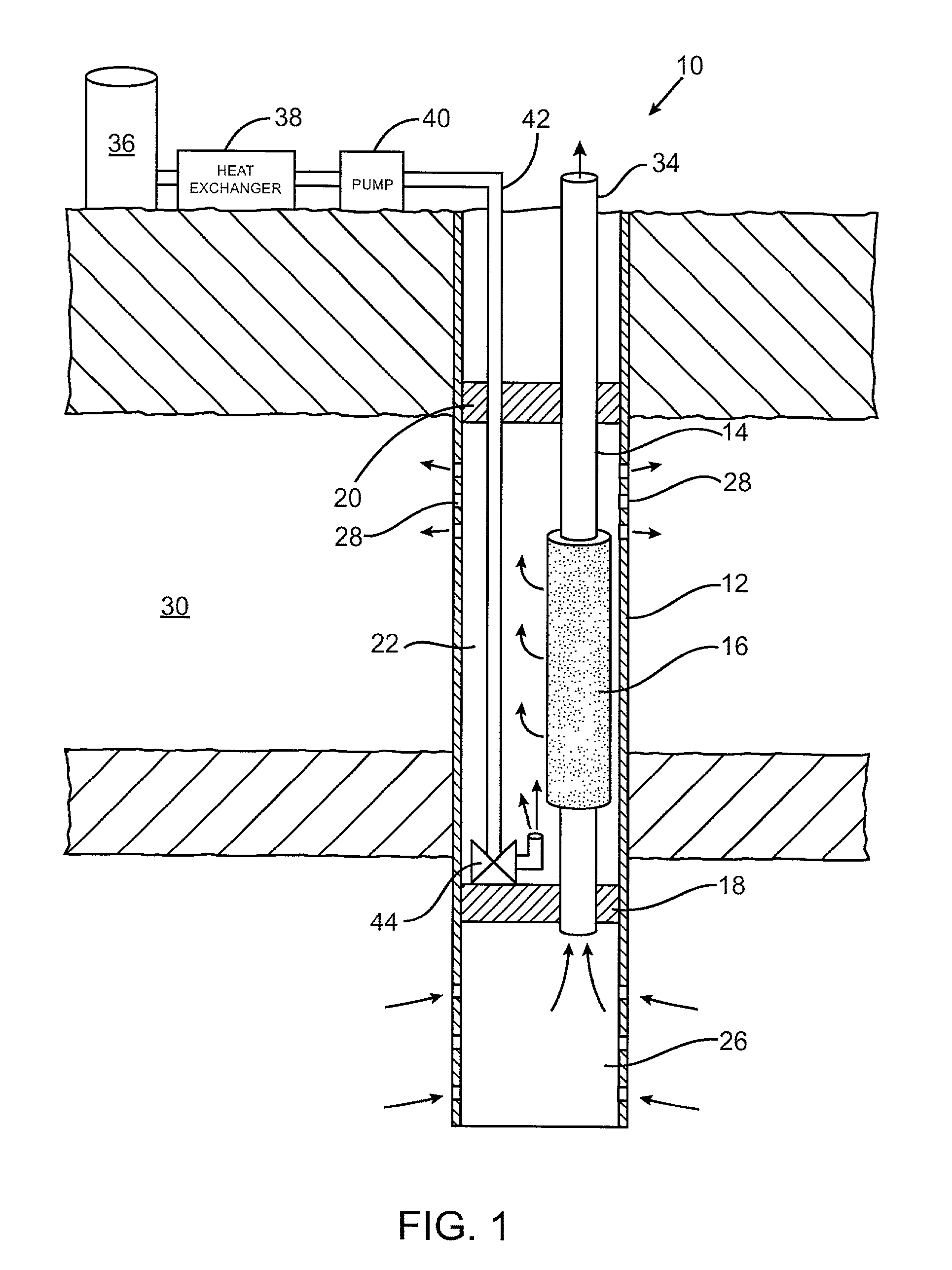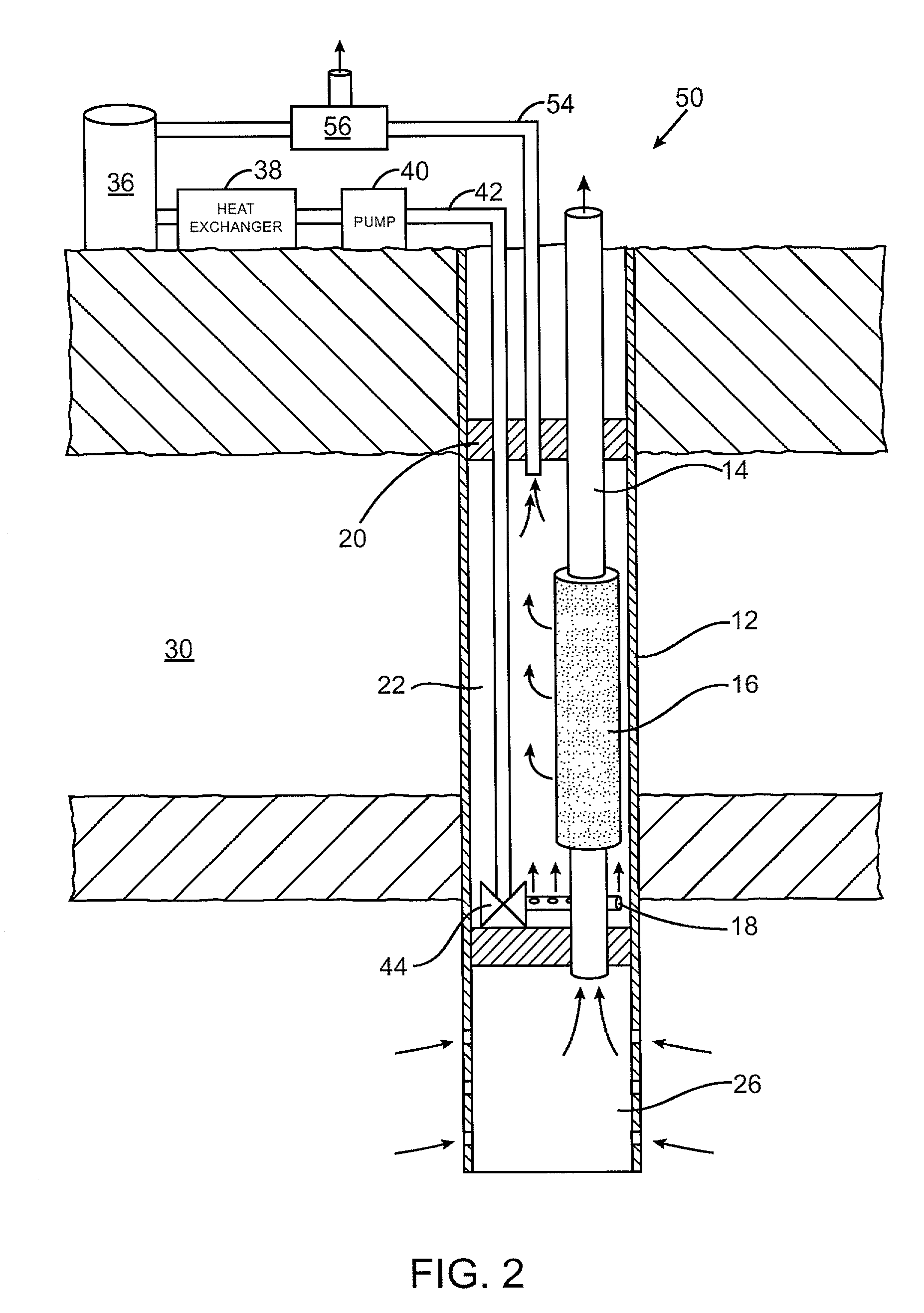Downhole membrane separation system with sweep gas
a technology of membrane separation and sweep gas, which is applied in the direction of water cleaning, separation process, borehole/well accessories, etc., can solve the problems of inefficient filter arrangement of u.s. pat. no. 6,015,011 for separating hydrocarbons from contaminants, and high cost of above ground separation
- Summary
- Abstract
- Description
- Claims
- Application Information
AI Technical Summary
Benefits of technology
Problems solved by technology
Method used
Image
Examples
example 2
Improvement of Separation with Sweep Gas
[0037] According to one example, a feed gas of 90% methane and 10% CO.sub.2 is fed to a CO.sub.2 selective membrane at a pressure of 1,000 psia and a flow rate of 1,000 scfm, with the raffinate pressure being held at 500 psia. We assume that the membrane is perfectly selective and permeates only CO.sub.2 and no methane. A countercurrent sweep of an inert gas, such as nitrogen at 500 psia and a flow rate of 400 scfm is introduced. CO.sub.2 can now be removed from the product gas down to a level of 2% CO.sub.2 content. This limit is a result of the overall mass balance and a limit on the driving force at the feed end of the membrane.
[0038] Clearly, the product purity has improved from 5% CO.sub.2 without the sweep gas to 2% CO.sub.2 with the use of the sweep gas.
[0039] FIGS. 1-4 each illustrate a single tubular membrane 16 for purposes of illustration. However, the membrane separation systems 10, 50, 70, and 90 may include multiple membranes arr...
PUM
| Property | Measurement | Unit |
|---|---|---|
| partial pressure | aaaaa | aaaaa |
| partial pressure | aaaaa | aaaaa |
| temperature | aaaaa | aaaaa |
Abstract
Description
Claims
Application Information
 Login to View More
Login to View More - R&D
- Intellectual Property
- Life Sciences
- Materials
- Tech Scout
- Unparalleled Data Quality
- Higher Quality Content
- 60% Fewer Hallucinations
Browse by: Latest US Patents, China's latest patents, Technical Efficacy Thesaurus, Application Domain, Technology Topic, Popular Technical Reports.
© 2025 PatSnap. All rights reserved.Legal|Privacy policy|Modern Slavery Act Transparency Statement|Sitemap|About US| Contact US: help@patsnap.com



